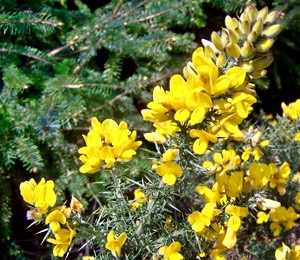Peat – a vast carbon (and water) store

Last year, the Woodland’s blog reported on the moorland fires around the U.K. and this Easter weekend yet another fire has been reported at Ilkley These fires have a devastating effect on local wildlife. Sadly, extensive peat wildfires have occurred in places as diverse as Indonesia (in 2015) and Greenland.
The fire (in Indonesia) and its associated smoke was responsible for the deaths of people and animals, and caused billions of pounds of damage through the destruction of homes and businesses. Also, the fires released truly massive amounts of carbon dioxide (a greenhouse gas) into the atmosphere.
Peatlands are ecosystems that are rich in decayed organic material. Carbon is stored away (sequestered) in thick layers of wet organic material; this has accumulated over centuries or indeed millennia. It has been estimated that the world’s peatlands store a quarter (or more) of the soil’s carbon - which is more than the carbon held in the earth’s forests.
 In the tropics, peat forms from the continuous cascade of leaves from the luxuriant canopy of forest trees, whereas in temperature regions, peat forms from Sphagnum moss. Sphagnum is an important but an ‘under-rated’ plant - it is a moss or bryophyte, that can hold many times its own weight in water*.
In the tropics, peat forms from the continuous cascade of leaves from the luxuriant canopy of forest trees, whereas in temperature regions, peat forms from Sphagnum moss. Sphagnum is an important but an ‘under-rated’ plant - it is a moss or bryophyte, that can hold many times its own weight in water*.
The peat formed from the decay of Sphagnum creates bogs and quagmires that store large amounts of water, slowing its flow and helping prevent floods. When peat areas are drained (channels are cut through the peat), they degrade and dry out. Then, they are then at risk of burning.
The drainage of peat areas is not restricted to parts of the UK, it also happens in tropical regions due to the demand for agricultural land (or even road building). Indonesia has drained peat lands with a view to expanding the cultivation of oil palms. The burning and loss of the peat leads to ecological degradation and the release of millions of tons of carbon dioxide - contributing to climate change. 
The recent warm weather in February resulted in a significant peat blaze - on Saddleworth Moor. The fire came with the advent of the warmest winter day (for the UK); recorded [21.2oC at Kew Gardens, London].
The recent 'winter' warmth not only affected moorland areas, fires were also recorded in the deciduous woodlands of the Ashdown Forest in Sussex and in a gorse area at Arthur’s Seat in Edinburgh - the ground and vegetation being much drier than usual.
* Because of this absorbency, Sphagnum was used as a wound dressing in WW1.
Details of the Ilkley fire can be found here : https://www.bbc.co.uk/news/uk-england-leeds-47999394
Comments are closed for this post.
